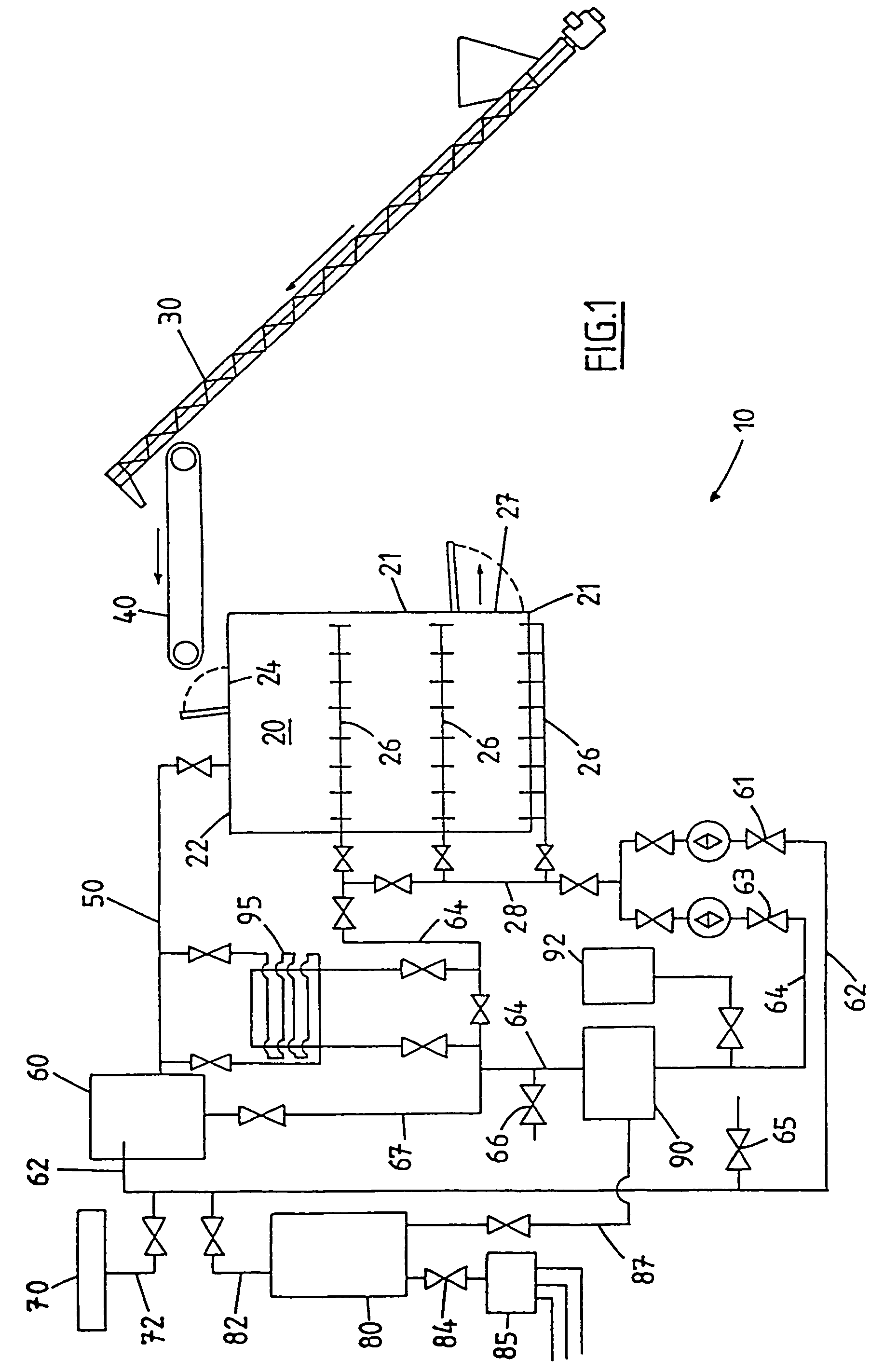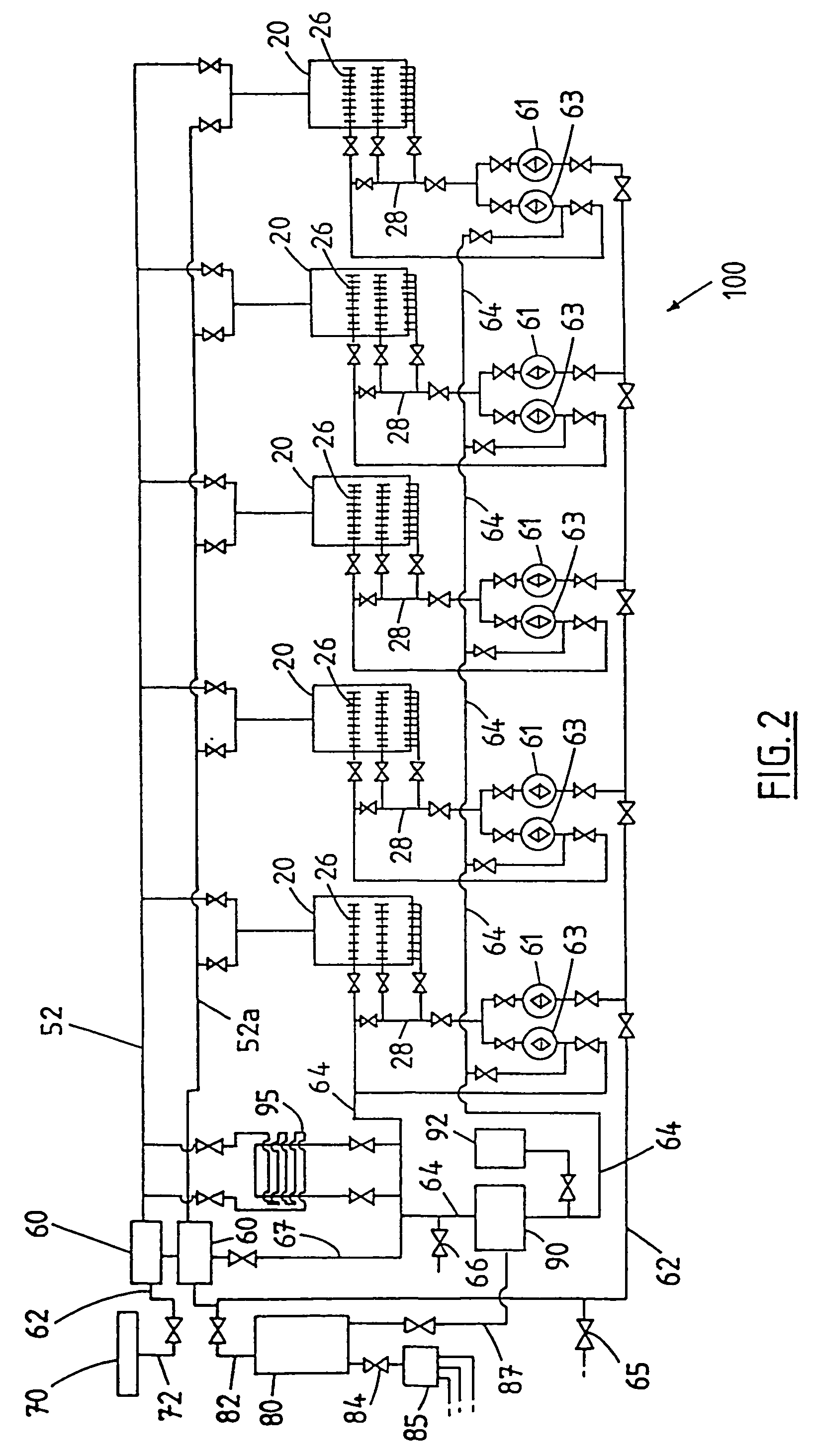Organic waste material treatment process
a technology of organic waste material and treatment process, which is applied in the direction of biomass after-treatment, biochemistry apparatus and processes, biochemistry apparatus, etc., can solve the problems of inefficiency in time, cost and labor, and the inability to readily absorb ammonium salts by plants, and achieve the effect of facilitating the treatment process of organic waste material
- Summary
- Abstract
- Description
- Claims
- Application Information
AI Technical Summary
Problems solved by technology
Method used
Image
Examples
example
[0092]Organic waste material consisting of shredded newspaper (6.75 kg), shredded cardboard (6.75 kg), grass clippings (4.4 kg), garden waste (30.4 kg) and chicken manure (38.3 kg) was blended and received in a 0.8 m3 vessel. The C:N ratio of the organic waste material was 25.6.
[0093]The contents of the vessel were subjected to a preliminary aerobic composting pre-conditioning stage wherein air was administered to the contents of the vessel at a flow rate of 300 L / hr. Interior air pressure inside the vessel was maintained at 25 kPa above atmospheric pressure. The temperature of the contents of the vessel rose to 52° C. after a period of three days, whereupon the administration of air to the contents of the vessel was discontinued.
[0094]The contents of the vessel were then subjected to conditions under which anaerobic digestion occurs. A liquid digestate derived from an earlier anaerobic digestion of a previous batch of organic waste material was delivered to the vessel. Recirculatio...
PUM
| Property | Measurement | Unit |
|---|---|---|
| temperature | aaaaa | aaaaa |
| atmospheric pressure | aaaaa | aaaaa |
| pressure | aaaaa | aaaaa |
Abstract
Description
Claims
Application Information
 Login to View More
Login to View More - R&D
- Intellectual Property
- Life Sciences
- Materials
- Tech Scout
- Unparalleled Data Quality
- Higher Quality Content
- 60% Fewer Hallucinations
Browse by: Latest US Patents, China's latest patents, Technical Efficacy Thesaurus, Application Domain, Technology Topic, Popular Technical Reports.
© 2025 PatSnap. All rights reserved.Legal|Privacy policy|Modern Slavery Act Transparency Statement|Sitemap|About US| Contact US: help@patsnap.com


